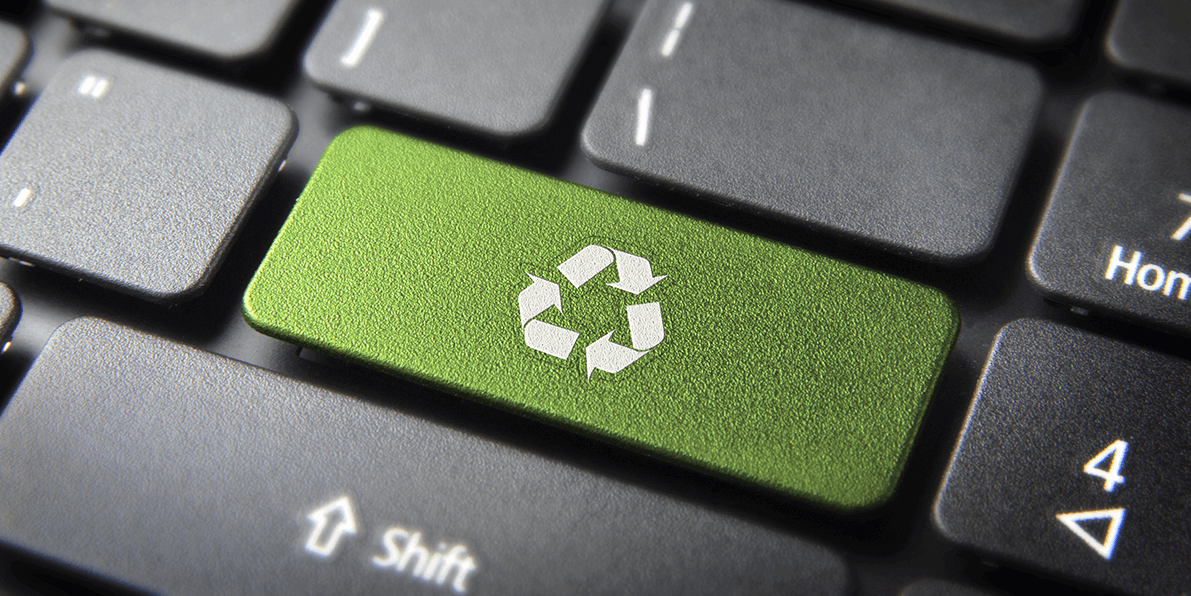Stay service-savvy
Get all the latest news and insights straight to your inbox.

Did you know electronic waste (e-waste) has become the world's most rapidly growing waste problem?
Worldwide, we generate around 62 million tons of e-waste every year. No matter how well we think we are doing, we can all reduce waste, and take steps to help save the planet. Here, we answer some common questions customers ask when considering e-waste recycling and data destruction solutions. Hopefully, this will help inform your decisions and allow you to choose the best option for your organisation.
E-waste refers to any broken or unwanted electronic device that’s been or is to be discarded. This includes corporate equipment such as tablets, laptops, monitors, printers, keyboards, and mobiles, as well as consumer equipment - from your fridge to your hairdryer.
Millions of electrical and electronic devices are discarded yearly as products break or reach their end-of-life. E-waste contains extremely toxic materials such as lead, mercury, brominated flame retardants (BFR), chlorofluorocarbons (CFCs) or hydrochlorofluorocarbons (HCFCs) that, if not disposed of correctly, can seep into the environment, potentially having disastrous consequences to human health, as well as the environment.
Recycling old electronics prevents harmful materials from ending up in landfills, causing damage to the environment. WEEE-compliant recycling ensures that equipment is handled safely and correctly, mitigating the risk to human health and the environment. Recycling also facilitates the recovery and reuse of valuable materials such as copper and gold for future devices, so it’s a win-win! As an added bonus, recycling your e-waste contributes to your ESG objectives and the UK government’s net zero strategy.
Recycling e-waste can help your business by ensuring compliance, protecting data, and returning financial benefits.
In addition to complying with environmental regulations like the Environment Act 2021, many examples of e-waste hold sensitive data. E-waste recycling ensures secure data destruction in compliance with the Data Protection Act, minimising the risk of data breaches or legal issues from dormant hardware. There are also financial benefits, as you can recover valuable materials that can be reused or sold to make new devices.
Less than 22.3% of the e-waste generated each year is recycled correctly. This enables valuable materials within discarded electronics to end up in landfills when they could be recycled and used for future devices.
Here in the UK, it is estimated that £148 million worth of valuable materials could be recovered from the e-waste we dispose of yearly if the correct recycling processes are followed. These materials include gold, silver, copper, aluminium, iron, and palladium and are found in electrical equipment such as circuit boards and laptops.
Yes, there are! In April 2025, the UK will implement digital waste tracking regulations to enhance environmental sustainability and promote responsible waste management practices. This legislation aims to significantly change and improve how waste is monitored and managed, providing increased visibility throughout the waste management process.
We recommend recycling or disposing of your unwanted electronics as soon as you no longer need them or when you upgrade to a new model. Electronic depreciation happens quickly, so it’s best to act promptly when recycling your devices, to ensure you can regain residual value from your investments.
Wavenet offers a fully certified IT equipment disposal and data destruction service to ensure that any equipment's reuse, recycling, or disposal aligns with your unique asset lifecycle requirements, and help you achieve your own net-zero goals.
To find out more, call us on 0344 863 3000 or email us at enquiries@wavenet.co.uk
Sustainability, Environmental awareness, e-waste, WEEE, Electronics recycling
Get all the latest news and insights straight to your inbox.